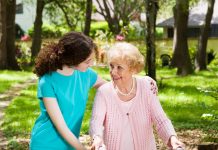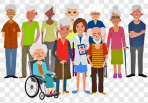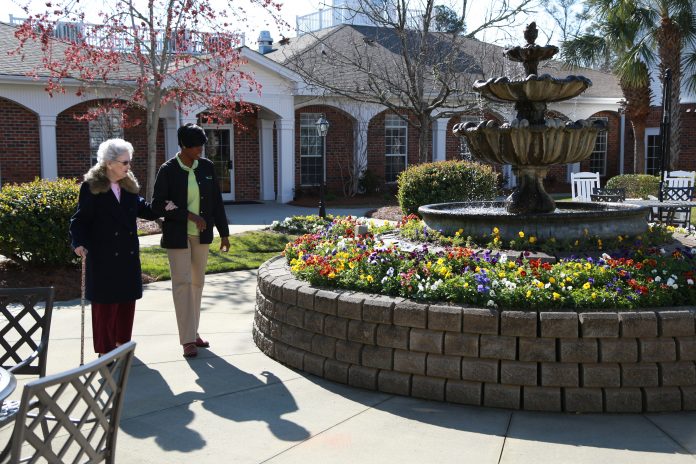Ah, retirement — that age where people can finally sit back, put their feet up and relax. But should they? All that relaxing may not actually be good for older people, and it may put them at greater risk for physical and mental health issues later on. Many medical professionals today recommend that adults in their golden years stay active and involved beyond retirement to protect their bodies and minds.
The truth is, aging adults need exercise, too. For family caregivers, however, even getting their loved ones to think about exercise can be a monumental task. While it may become more difficult to take on strenuous physical exercise over time, there are simple and easy exercises that can help older adults with mobility, joint pain, mood and more.
It’s not just physical exercise, either. Mental exercises can help keep minds sharp and clear and help loved ones to feel better about themselves as they age.
Convincing older adults to take better care of themselves physically and mentally doesn’t have to be a struggle. In fact, I’ve put together five easy ways family caregivers can help their aging loved ones stay moving well beyond retirement, or at least beyond the recliner.
1. Put on Your Walking Shoes
Walking can be an easy way to work a little more activity into your loved ones’ daily lives. If they can walk unassisted or with a walker, set aside part of your day to walk with them. If the weather is warm and clear, consider going for a walk around the neighborhood. Otherwise, consider taking them with you to a local community center with a walking track. And if all else fails, there’s always the grocery store or local mall.
Walking is a great way for aging adults to build endurance and strength. While some older adults may worry that spending time on their feet can increase the risk of falls or injury, it’s actually the opposite: older adults who walk more often are steadier on their feet and suffer fewer falls than their sedentary counterparts. Walking can also help with leg and joint pain, as well as circulation problems.
2. Make Exercise a Social Experience
Older adults can find themselves isolated from communities they were once part of, but group exercise is a great way for them to forge new friendships and become connected again. It’s also an ideal way to become more active and stick to those activity goals over time. Caregivers should look for exercise groups and classes for older adults, like water aerobics, yoga or other low-intensity programs. These workouts focus on many of the problems aging adults can face, including mobility, joint stiffness and stability issues.
3. Help Loved Ones Get in Touch with Their Inner Selves
You might have heard of mindfulness and meditation as new self-care crazes for millennials, but aging adults can receive clear and demonstrable benefits from them, too. Meditation has long been used to clear stress, ease anxieties and block fears, which many older adults face. Research has shown that it can benefit memory in aging adults, and it’s even being used to help people living with Alzheimer’s and other age-related cognitive impairments.
Many local community centers, gyms, senior centers, care facilities and libraries offer mindfulness classes for older adults, so be sure to see what resources are available for your loved ones.
4. Play Some Brain Games
The best way to keep a muscle from shrinking is to use it, but the brain can also improve with use or decline with inactivity. Playing board games, completing puzzles and engaging in hobbies are all ways that aging adults can keep their minds active. Why not make time for a family game night to play a favorite board or card game with your aging loved ones? Not only will you be helping them protect their brains, but you might even learn a thing or two about Mahjong or Bridge!
It’s also good to reorganize your brain. Activities that are new and complex are good brain exercises. So, encourage your loved ones to do something every day to challenge their brain, like taking up a new hobby or learning to play a musical instrument. Or have them do something they already know how to do but in a different way — like eating, combing their hair or brushing their teeth with their non-dominant hand.
5. Provide Constant Encouragement and Support
This one’s an exercise for the family caregiver, but it’s still important in helping your loved ones stay active and engaged. As a caregiver, your loved ones rely on you the most, and that means your encouragement and support go a long way.
Gently pushing your loved ones out of their comfort zone is important, not just for them, but for you. Use this time to connect with your loved ones, and take the time to be present. You might find that you’ll become healthier, both physically and mentally, too.
Overall, aging doesn’t have to mean a decline in health. With these strategies, family caregivers can help their loved ones stay healthier and happier for years to come.
























